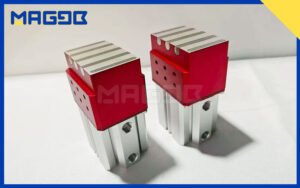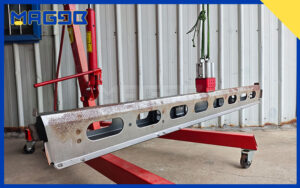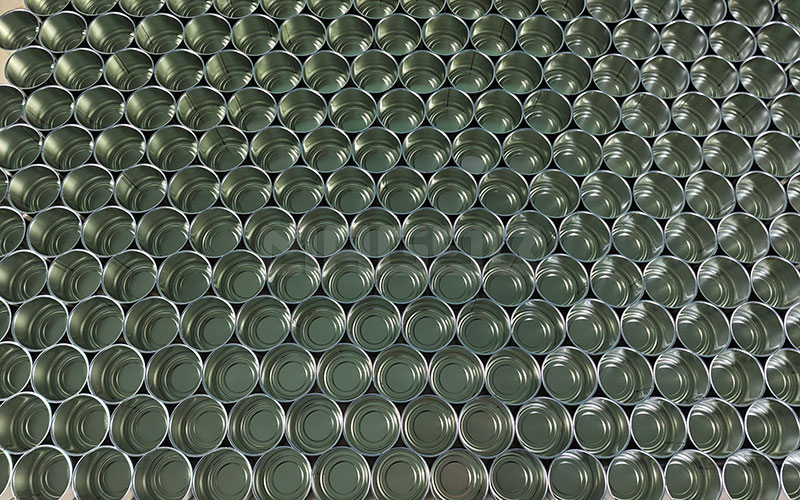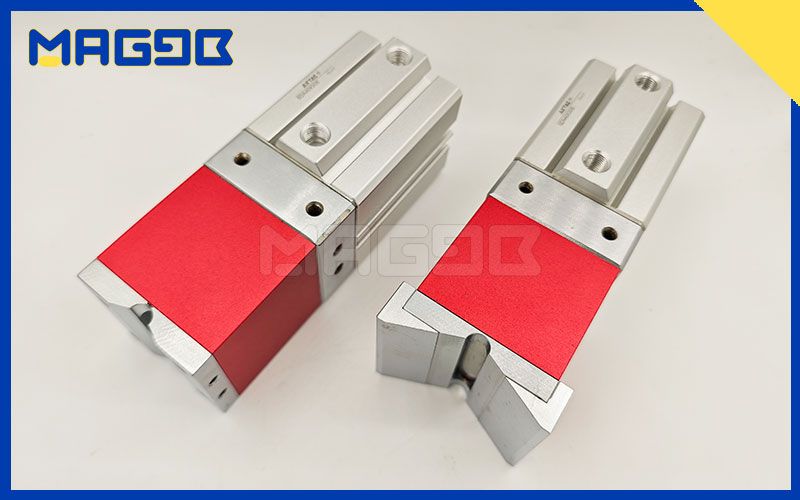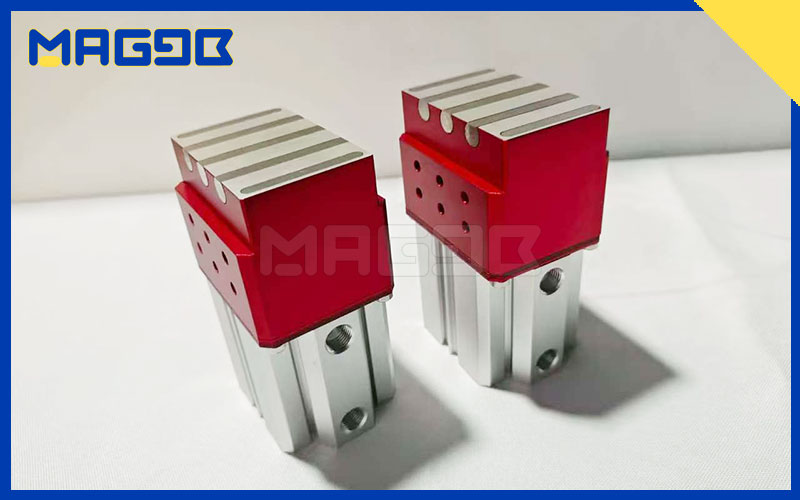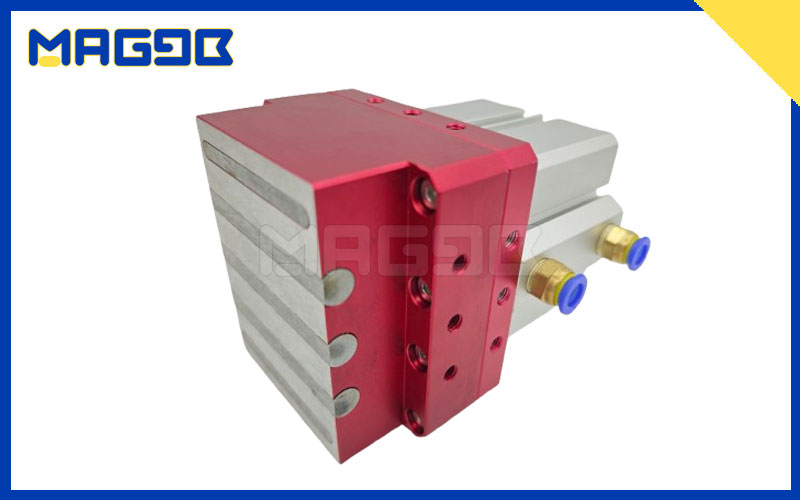A pneumatic magnet is not a magnet that uses air to create a magnetic field. Instead, it is a device that combines an electromagnet with a pneumatic actuator (usually a piston/cylinder). The electromagnet provides the holding force, while the pneumatic system provides the movement to engage and disengage the magnet from a ferromagnetic surface (like steel).
Think of it as a robot gripper that uses a magnet instead of fingers. The pneumatic part moves the magnet into position, and the electromagnet turns on to latch onto the object.

